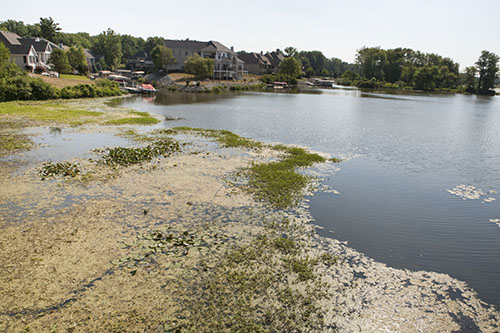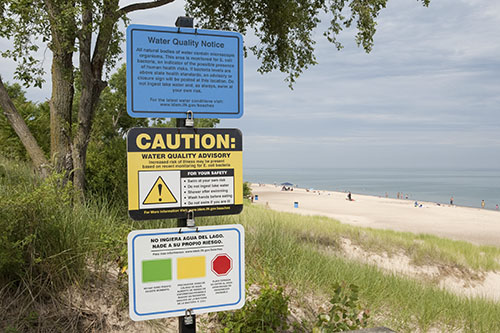Boat sewage dumped into our waters may affect aquatic plants, fish, and other animals. The nutrients, microorganisms, and chemicals contained in human waste from boats have a negative impact on coastal and inland waters, particularly in sheltered or shallow areas not naturally flushed by tide or current.

Sewage contains nutrients that fertilize algae in the water. This can make algae grow out of control, reducing the amount of light which reaches underwater grasses. Algae can also settle on the grass, smothering it. These grasses provide nursery areas for young fish and help prevent shoreline erosion.
Flow-through treatment devices (Type I or II Marine Sanitation Devices or MSDs) reduce bacteria in the sewage, but do not reduce the nutrients or organic matter going into the water.
Organic matter in sewage is decomposed in the water by bacteria. During this process, the bacteria use oxygen. As a result, the bacteria in the water may deplete the water's dissolved oxygen level, stressing fish and other aquatic animals that need oxygen in the water to survive.

Microorganisms from the digestive system are found in human waste. Once they are in the water, they can pass diseases like hepatitis to people in contact with the water. They also can contaminate shellfish beds, passing disease on to people who eat raw oysters or clams.
Chemical products used in onboard treatment devices, such as chlorine and formaldehyde, can be toxic to marine and estuarine life and could pose a problem in areas where boats congregate and where there is little tidal flushing action.
How has CVA reduced the impact of sewage on our waters?
Each year pumpouts and dump stations funded through CVA offer safe disposal of waste that otherwise may have been discharged to our nation’s waters. This has resulted in improved water quality for public drinking water supplies, river ecosystems, shellfish beds and other aquatic life; convenient service for boaters on U.S. navigable waters; and boaters who are informed of how best to dispose of vessel sewage.
Since the inception of CVA, the program has funded over 6,000 pumpout and dump stations and has provided funds to help operate and maintain over 3,700 systems. Through dedication of the States, private marinas, the Sport Fishing and Boating Partnership Council, States Organization for Boating Access, environmental groups, and the boating public, millions of gallons of sewage have been diverted from polluting U.S. waters each year. These groups have also been instrumental in keeping the facilities in working order and providing information for the boating public regarding the importance of keeping waters clean by using pumpout and dump stations.
